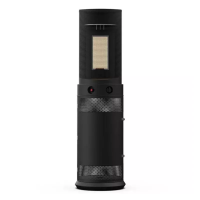Mimosa Backhaul Help Content
Mimosa Backhaul Troubleshooting Guide
Copyright © 2014 Mimosa Page 202
Troubleshooting GPS Signal Strength
Both the B5/B5c and B11 utilize high-precision GPS and GLONASS timing sources to synchronize their
communication and facilitate collocation. Up to 48 satellites are detectable: 24 from GPS and 24 from GLONASS. The
Dashboard and Wireless > Location pages display the number of satellites, signal strength, and timing quality.
If these timing sources are unavailable (such as while indoors or when GPS signals are otherwise blocked), the 5
GHz wireless link will still associate and operate but with lower performance. In this case, a Time Synchronization
Function (TSF) is used to exchange timing information between radios in the same link. This mode is represented
on the Dashboard as "No GPS" whenever GPS/GLONASS signals are absent.
GPS performance can usually be improved by relocating the radio physically, and there are several considerations
depending on the installed conditions:
Ensure that firmware 1.2 or later is installed on both devices.
●
Verify there are satellites present in the graph on the Wireless > Location page. There may be only a small
●
number of satellites, or only satellites with low SNR present in the graph.
Ensure that the top of the backhaul unit has an unobstructed view to the sky. Even when located outdoors, GPS
●
signals can still be blocked by physical objects for a portion of time. Note any patterns such as specific times
when GPS signals are degraded.
Relocate the radio away from any high-power transmitters (TV, LTE cellular/mobile, or FM) that are mounted on
●
the same tower or nearby.

